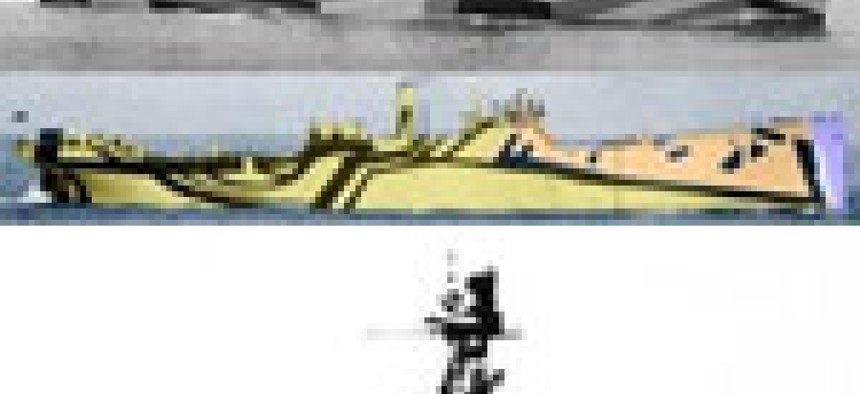Concept from WWII dazzle ships being applied to spoof facial recognition scanners
An artist finds that the same approach used in World War I to confound the rangefinders on attacking ships will prevent a facial scanner from recognizing you.
Although it might seem a little bit like wearing a tinfoil hat to prevent the government from listening in on your thoughts, an artist has discovered a way to prevent computers from recognizing your face, or even to pick it out of a crowd at all.
Oddly enough, the technique used is nothing new, at least to the history buffs out there who study World War I or even World War II. It’s called dazzle camouflage.
If you’ve ever seen those fancily painted ships with wavy lines running back and forth in old photographs, it’s really the same idea. Back in World War I, the British wanted their ships to be hard to spot, which isn’t easy on the open ocean with nowhere to hide. So instead of camouflage, they opted for confusing paint schemes.
At the time, the visual rangefinders used to calibrate the artillery on an attacking ship required a spotter to use a machine and move parallel lines to bracket a target. The speed and heading of the target also needed to be estimated and fed into the range-finding mechanical computer.
The idea was that the dazzle painting, consisting of geometric shapes in contrasting colors, made all this difficult to do. Fake bow waves hid the actual speed of a vessel, and in some cases the fore and aft ends were hard to discern. It also made it so that ships might be misidentified due to their broken silhouettes. A destroyer might be mistaken for a cruiser, for example.
Fast-forward to today. Facial recognition scanners are used not only for access to certain government buildings but also at big events, such as at the Super Bowl, to look for criminals or suspected terrorists in the crowd.
Some people don’t like this type of passive scanning and feel that it’s an invasion of privacy. So one artist developed a way to use dazzle paint to prevent automatic scanners from recognizing your face, or even that you are a person at all.
Artist Adam Harvey did some experiments and found out that painting multicolored triangles under your eyes tricks most facial recognition scanners, so that they don’t recognize you as even having a face. He also did some experiments with various hairstyles to see if that would work but found that only the paint would reliably do the trick. That won’t get you access to facilities, of course, but it might help you avoid passive scans.
The problem with Harvey’s technique, called CV Dazzle, short for computer vision dazzle, is the same thing that plagued the dazzle ships of the world wars. It might confuse electronic scanners, but the dazzle paint also makes a person or a ship pretty obvious.
If you are walking around with big triangles painted on your face, you are probably going to arouse suspicion. The computers won’t notice you, but the guy with the gun standing nearby will certainly raise an eyebrow. I mean, it’s a bit less obvious than wearing a ski mask into a bank, but not by too much.





